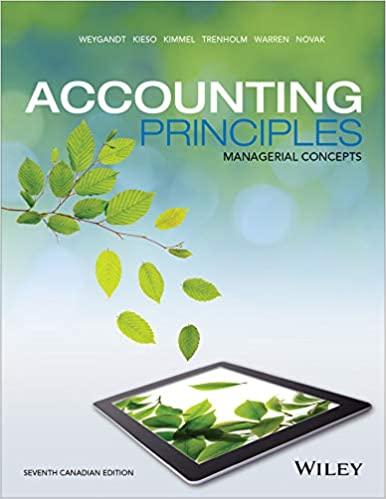Answered step by step
Verified Expert Solution
Question
1 Approved Answer
1// What makes information relevant to decision making? A. Information that is relevant to decision making is data that does not differ among alternatives. B.Information
1// What makes information relevant to decision making? A. Information that is relevant to decision making is data that does not differ among alternatives. B.Information that is relevant to decision making is expected future data that differs among alternatives. Question 2// Which is an example of a sunk cost? A.Rent expense B.Depreciation expense C.Original purchase price D.All of the above Question 3/// The difference between price-takers and price-setters is A. A company is a price-taker when it has little control over the prices of its products and services because they are not unique or competition is intense. B. A company is a price-setter when it has control over the prices of its products and services because they are unique and there is little competition. C. Both of the above Question 4// The question(s] managers should answer when setting regular prices are: A. What is the company's target profit? B.How much will customers pay? C. Is the company a price-taker or a price-setter for this product or service? D. All of the above . Question 5/// Cost-plus pricing is a method used by price-setters to manage costs and profits by determining the price. Full product cost + Desired profit = Cost-plus price. A.True B. False Question 6// How could a segment with an operating loss cause the company to have a decrease in total operating income if the segment is dropped? A. Dropping a segment with an operating loss will always benefit the overall operating income of the business B.Dropping a segment with an operating loss will never benefit the overall operating income of the business. C. Dropping a segment with an operating loss can cause the company to have a decrease in total operating income if the segment has a positive contribution margin. If a segment has a positive contribution margin, then the segment is helping to cover some of the company's fixed costs. Question 7// A constraint is a factor that restricts the production or sale of a product. True False Question 8/// What questions should managers answer when considering outsourcing? A. How do the company's variable costs compare to the outsourcing costs? B. Are any fixed costs avoidable if the company outsources? C. What could the company do with the freed manufacturing capacity? D. All of the above Question 9/// What question(s) should managers answer when considering selling a product as is or processing further? A. How much revenue will the company receive if it sells the product as is? B. How much revenue will the company receive if it sells the product after processing it further? C. How much will it cost to process the product further? D. All of the above . Question 10/// What are joint costs? A. Joint costs are costs of a production process that yields multiple products and are relevant to the sell a product as is or process further decision. B. Joint costs are costs of a production process that yields multiple products. Joint costs are sunk costs and therefore not relevant to the sell a product as is or process further decision
Step by Step Solution
There are 3 Steps involved in it
Step: 1

Get Instant Access to Expert-Tailored Solutions
See step-by-step solutions with expert insights and AI powered tools for academic success
Step: 2

Step: 3

Ace Your Homework with AI
Get the answers you need in no time with our AI-driven, step-by-step assistance
Get Started


